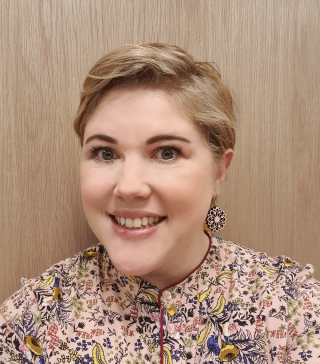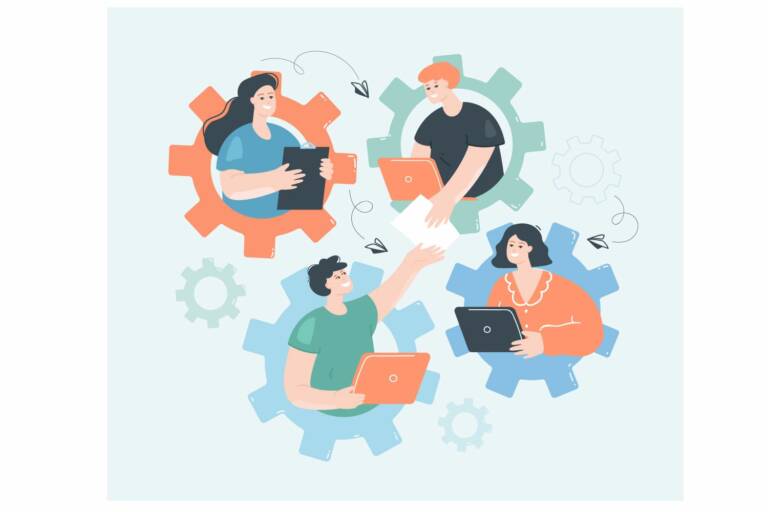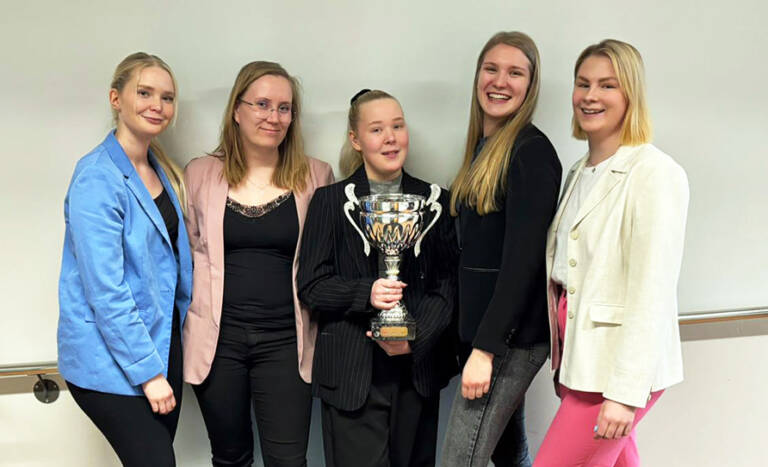But what is continuous learning? What does it mean for our organization, our community and for all of us at an individual level? Here are some introductory thoughts I would like to share with you and that will hopefully lead to some fruitful discussions! This is the first post of a serie, so keep on reading!
 Who am I? My name is Clémentine Arpiainen, I work as a project manager in TAMK Edu´s team. I happen to be French but I gladly communicate in Finnish as much as I can. For now 6 years, living in Finland has been a quite a learning journey… Embracing the Finnish lifestyle… Learn the language, learn the culture, learn the working culture, learn to start all over again… learn, learn, learn again and again! That´s it? Is that continuous learning? Well yes and no…
Who am I? My name is Clémentine Arpiainen, I work as a project manager in TAMK Edu´s team. I happen to be French but I gladly communicate in Finnish as much as I can. For now 6 years, living in Finland has been a quite a learning journey… Embracing the Finnish lifestyle… Learn the language, learn the culture, learn the working culture, learn to start all over again… learn, learn, learn again and again! That´s it? Is that continuous learning? Well yes and no…
Real learning gets to the heart of what it means to be human. Through learning, we recreate ourselves. Through learning, we become able to do something we never were able to do. Through learning, we re-perceive the world and our relationship to it. Through learning, we extend our capacity to create, to be part of the generative process of life. There is within each of us a deep hunger for this type of learning. —Peter M. Senge, The Fifth Discipline
Continuous learning: A buzz word? Maybe. A challenge? For sure!
As many of us are wondering, let´s try to see WHAT does this really mean? For some time, we have spoken about “Lifelong learning” and now it feels like someone suddenly decided we switched terms and “continuous learning” is the new trend. In a way it is true that terms follow trends and tend sometimes to describe similar concepts under a new appellation. But in this case, I believe these two terms need to be understood really distinctively. And if I would try to draw the difference shortly, I would say that lifelong learning encompasses everything you have been learning since you were born and will keep on learning until you die. So it represents what you have learned, learn and will be still learning. Continuous learning not only represents the content but it is also about the how. It is about this capacity to question yourself, question your skills: whether they need to be updated, renewed or just utilize in such a manner you had not considered before. It is about becoming conscious about this need we all have to keep on learning and adapt ourselves to what tomorrow might bring. It is this capacity to question the validity of our skills and of their application always in comparison to the needs the society of yesterday, today and tomorrow has had, has and will have. Another aspect that I find personally important to mention is that continuous learning also poses the question regarding the need and process to sometimes unlearn to allow oneself to learn some more.
WHO should feel concerned? Well that is that´s probably the only answer I am confident to give: ALL OF US! Too often, continuous learning is limitedly associated with post-degree education and there again we would refer to a form of content. Yes, aikuiskoulutus, täydennyskoulutus, erikoiskoulutus, avoin AMK are part of continuous learning. They are the already existing solutions to keep on learning, but it is not all. Continuous learning development poses a very large set of questions, that challenge us for sure but also bring new great opportunities for all of us. Continuous learning may be seen as a philosophy, a way of living, a possibility to look at your skills, at your wishes for life closer. What do I know well? What would I need to know or improve to perform at work, feel confident and HAPPY? And most important perhaps, what would I like to know?
Finland as most of the countries from the OECD is going through profound structural shifts in the workforce. And this situation calls for a restructuration of our learning and training system. The digital era, the massive adoption of automation and diverse new technologies as well as the growing importance of artificial intelligence (AI) combined with other megatrends such as aging population will lead to a demand for occupations such as managers, technology experts and health professionals that could rise nearly twenty percent by 2030, while demand for administrative and manual roles will decline just as importantly. Whether we are ready or not for it, many of us might see (if not already) their competences outdated very rapidly and therefore we need to act now and prepare the future generations to face this reality!
Are you ready to hear more? In my next post, I will write about why and how continuous learning has to become part of our reality.
Text: Clementine Arpiainen, Project Manager, Jatkuva oppiminen






Kommentit